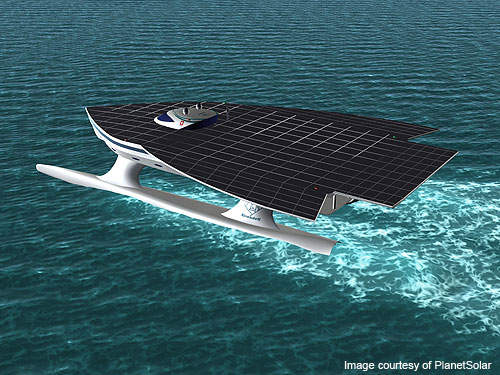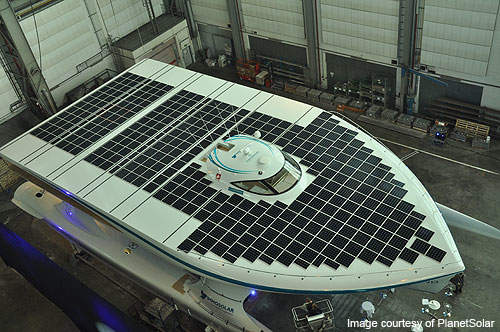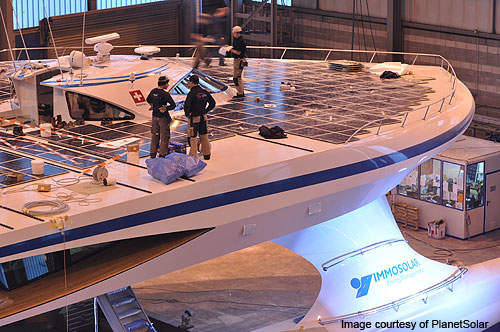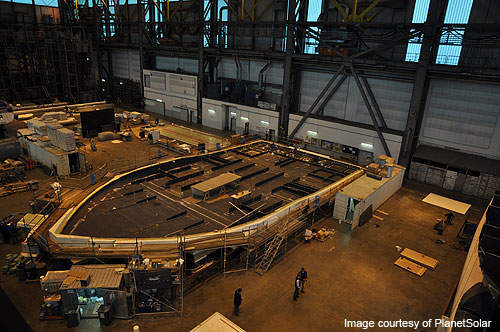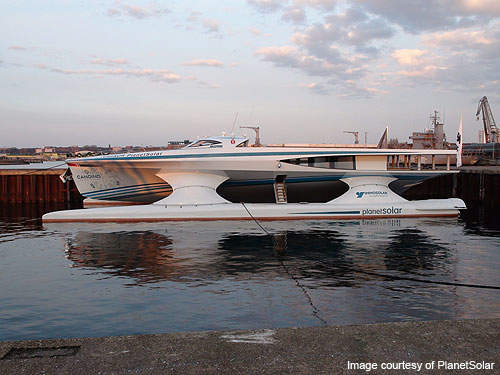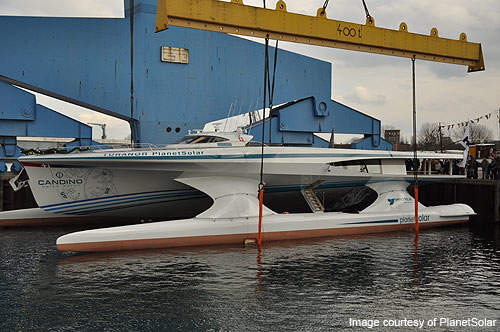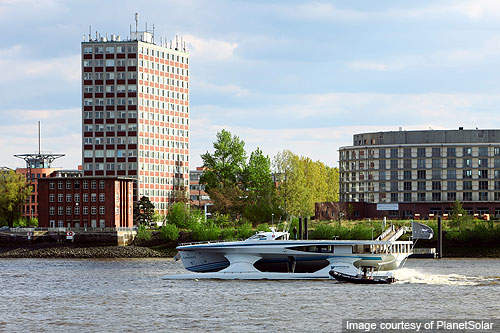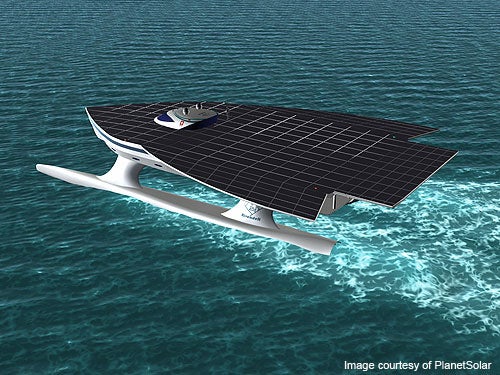
The PlanetSolar is a solar-powered vessel built by Knierim Yachtbau, in Kiel, Germany for Switzerland-based PlanetSolar.
It is the biggest solar boat ever built. The solar powered craft is topped by a large array of photovoltaic panels.
The boat is designed to circumnavigate the world. It became the first multi-hull vessel to sail around the world using solar energy.
The voyage began in 2010. A distance of more than 50,000km was covered in 160 days at an average speed of 8kt.
The boat sailed from Marseilles and crossed the Atlantic Ocean, the Panama Canal, the Pacific Ocean, the Indian Ocean and the Suez Canal to join the Mediterranean.
PlanetSolar was christened and launched in March 2010. The solar boat made its first voyage off Kiel in April 2010.
It was stationed in the waters of the Baltic Sea to complete a test phase during 2013. The test was conducted by the University of Geneva (UNIGE) from June 2013 to August 2013.
PlanetSolar specifications
“It is the biggest solar boat ever built. The solar powered craft is topped by a large array of photovoltaic panels.”
The 31m long PlanetSolar has a beam of 15m (23m with flaps) and draft of 1.55m. The height above waterline is 6.30m.
The deadweight of the boat is 85t. It can sail at a maximum speed of 14kt. The boat can accommodate four crew and up to 60 personnel on its world voyage.
The solar generator can produce peak power of 93.5kW. The efficiency is estimated at 18.8%.
Lithium Ion (NCA) batteries have the voltage of 388V and capacity of 2910Ah (485Ah / cell).
PlanetSolar design
The solar-powered boat was designed by Auckland-based naval architecture and yacht design company LOMOcean Design.
The design phase included the successful comprehensive test programme involving towing tank tests in calm water and waves. The ship design incorporates a main hull featuring two hydrodynamic floats.
The top of the boat is surfaced with 127 photovoltaic modules covering 537m². The power generated by the modules is stored in Lithium Ion (NCA) batteries. The 648 cells installed in the boat weigh about 11t.
The board battery banks have an efficiency of over 95% and deliver electricity to the electric motors in each demi-hull.
Construction of the solar-powered vessel
Swiss Rivendell Holding funded the construction of the boat amounting to €12.5m. The construction began in January 2009 at the shipyard Knierim Yachtbau in Kiel and took 14 months to complete.
“PlanetSolar was christened and launched in March 2010. The solar boat made its first voyage off Kiel in April 2010.”
Around 100 personnel were involved in the shipbuilding. The boat is made of carbon-fibre epoxy sandwich materials.
About 20.6t of steel, 11.5t of sandwich core and 23t of Epoxy Resin and Hardener are used in the construction.
The project is supported by the French Ministry of Ecology, Energy, Sustainable Development and Land Settlement.
The photovoltaic modules are supplied by the Immo Ströher. Autodesk provided the technology to create 2D and 3D plans of the boat.
Performance of the Swiss vessel
The solar-powered catamaran demonstrated highest efficiency during the towing tank tests conducted at the Australian Maritime College in calm water and waves. The wind tunnel tests also proved successful.
The displacement during the circumnavigation will be 65t, further it will be increased to a displacement of 85t to serve as a luxury yacht.
Propulsion of the biggest solar boat ever built
The PlanetSolar is powered by four high-efficiency electrical permanent magnet synchronous motors driving five-bladed carbon fibre propellers through two drive shafts.
Four motors develop a total power output of up to 176kW (239bhp), of which about 20kW per hour is consumed at cruising speed.
The backup power is utilised at night and during rains. The advanced lithium-ion batteries can store up to 1.3MW of solar energy under deck.
The boat is equipped with a rudderless steering system. Each propeller supplied by AIR has a diameter of 2m and rotates at a maximum speed of 160rpm.
Related content
Lottie Holly Mussel Dredger, North Wales, United Kingdom
Lottie Holly is a new mussel dredger commissioned by its owner Myti Mussels in September 2013.
Fjord Line’s MS Stavangerfjord Cruise Ferry, Norway
Fjord Line’s MS Stavangerfjord, the first of the two new cruise ferries ordered to Bergen Group, was commissioned in June 2013.

